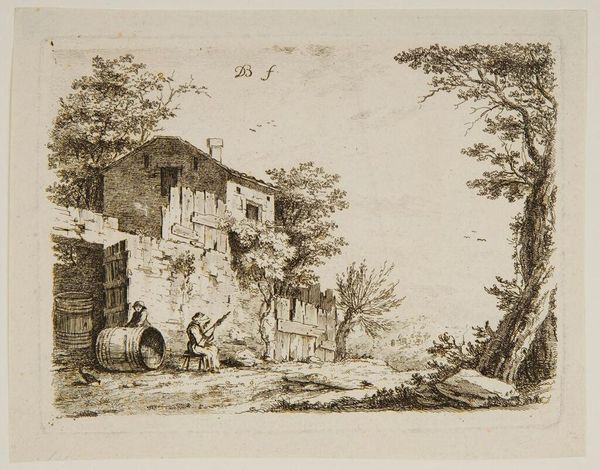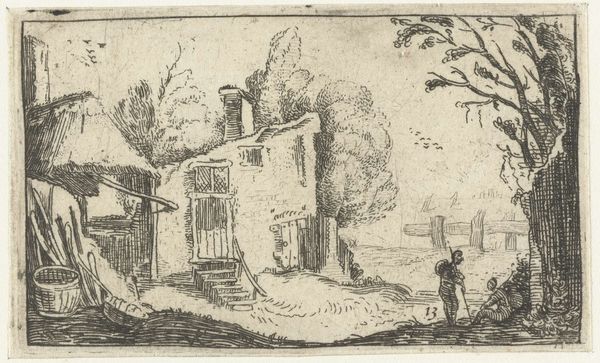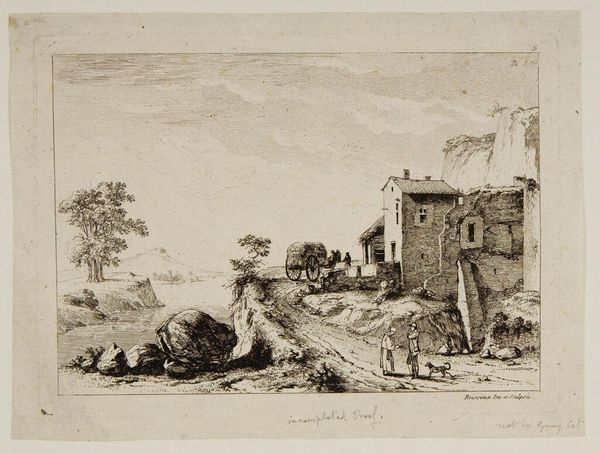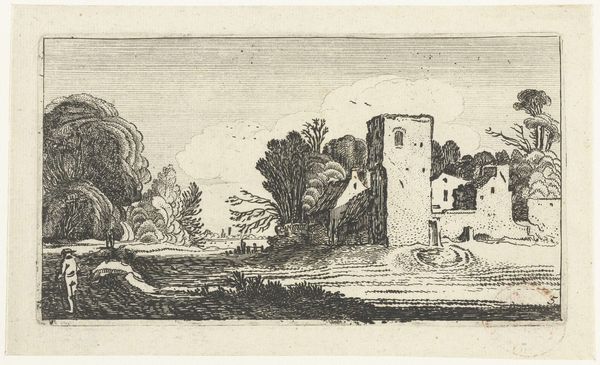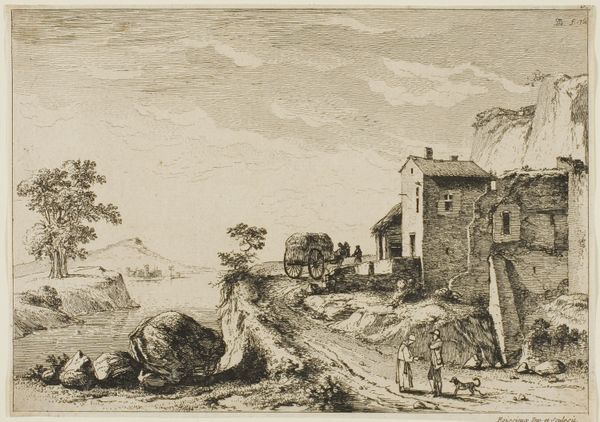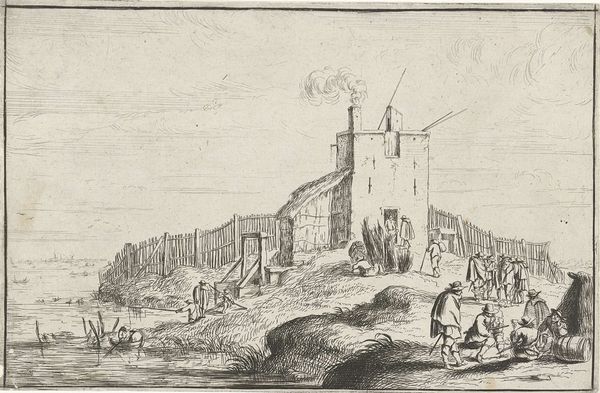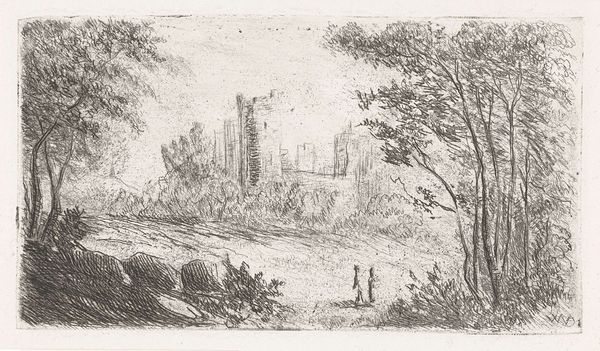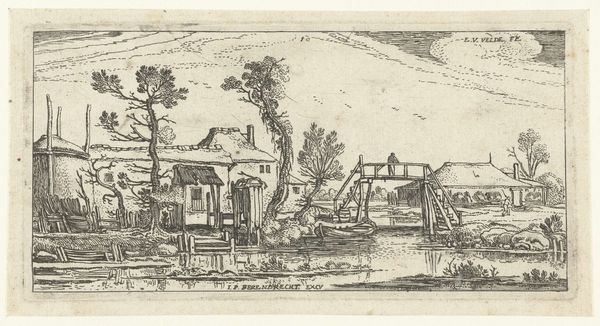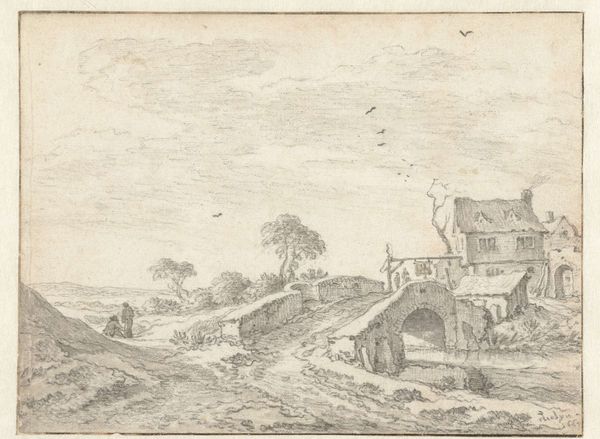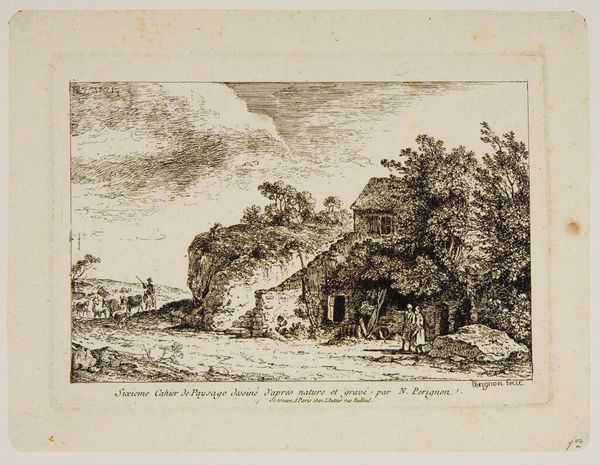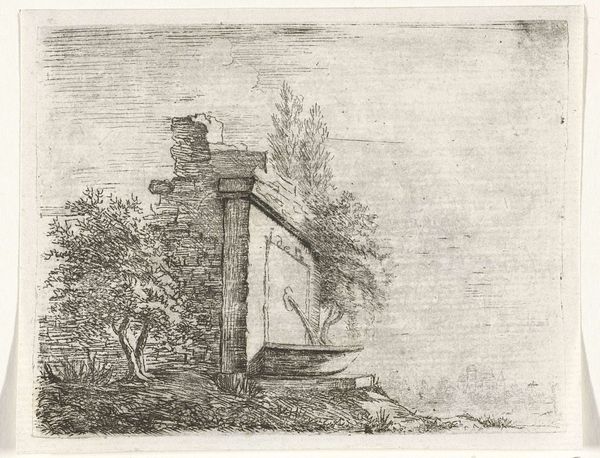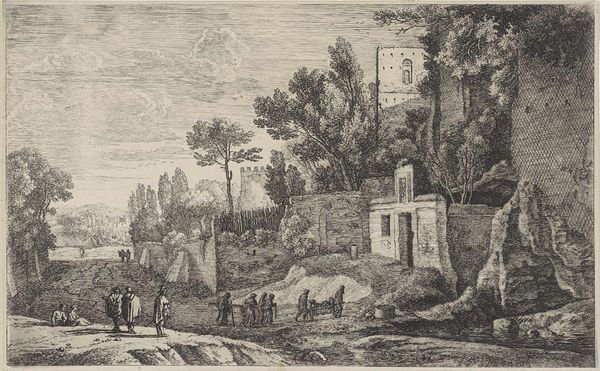
drawing, print, etching, pen
#
drawing
#
baroque
# print
#
pen sketch
#
etching
#
pencil sketch
#
landscape
#
etching
#
pen
#
cityscape
Dimensions: height 133 mm, width 217 mm
Copyright: Rijks Museum: Open Domain
Curator: What we have here is "Figure by a House with Stairs," an etching by Charles de Hooch, dating from somewhere between 1613 and 1638. Editor: My first impression? The worn texture! Look at how the etching captures the crumbling facade and uneven steps of this building; you can almost feel the coarse stone under your fingertips. Curator: Indeed! And contextually, the slightly dilapidated state is indicative of the social transformations happening at the time. We see in De Hooch's work, echoes of an era where the established order was slowly giving way. Etchings like these found a receptive audience eager for depictions of daily life in changing urban landscapes. Editor: Right, and it makes me consider the artist's own production. Creating an etching demanded tangible skill: the acid, the metal, the pressure of the press… each step contributing to that sense of lived-in history that's transferred onto the paper itself. And the marks of the hand feel critical, every etching line emphasizing how different it feels from the idealized architecture typical of that era's grand public art commissions. Curator: That divergence highlights a shift. While commissions projected power, De Hooch and others were documenting a more prosaic reality. And if we think about distribution, these prints circulated among a different, burgeoning middle-class audience hungry for affordable images. Editor: And consider the materials that informed the content—affordable paper stock encouraging prolificacy that allowed wider accessibility. Look at the line work again. It’s simple, efficient. De Hooch probably thought carefully about how to convey texture with the least possible effort. Curator: Absolutely. It is through this economical use of material that we glimpse the priorities of a new patronage and begin to really understand the function this work played as part of an expanding media landscape of its era. Editor: To think this was the equivalent of someone sketching on location; a direct, unmediated engagement of time and place etched indelibly onto a surface, creating something quite intimate. Curator: Intimate, yet also historically resonant. Reflecting a period where art began mirroring the changing structures and lived experiences of its audiences. Editor: A material trace, ultimately telling tales that are profoundly human.
Comments
No comments
Be the first to comment and join the conversation on the ultimate creative platform.
